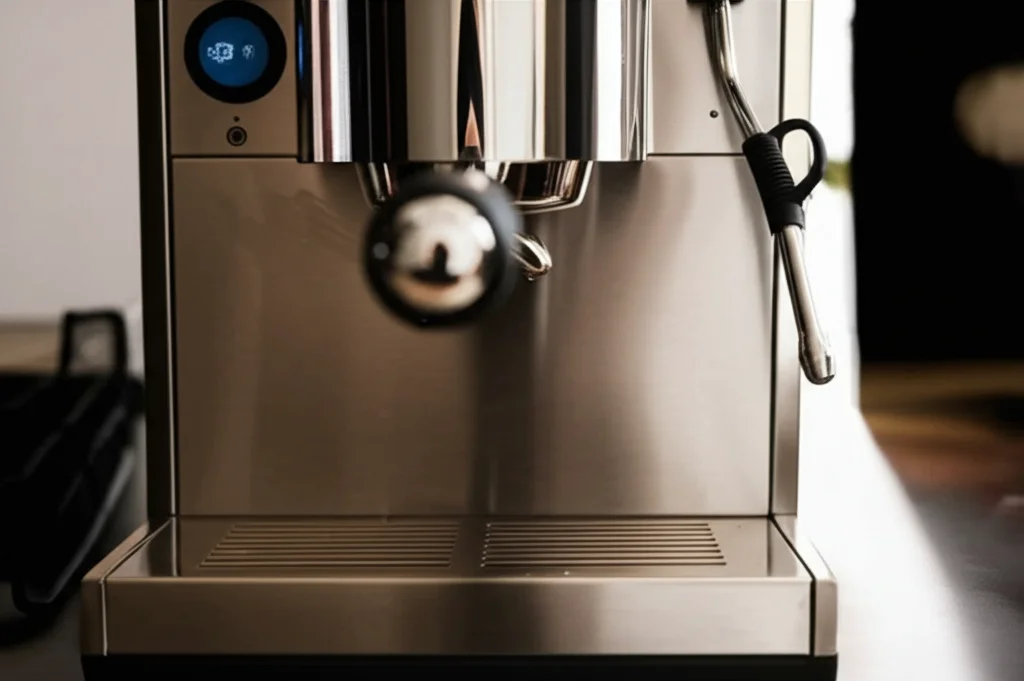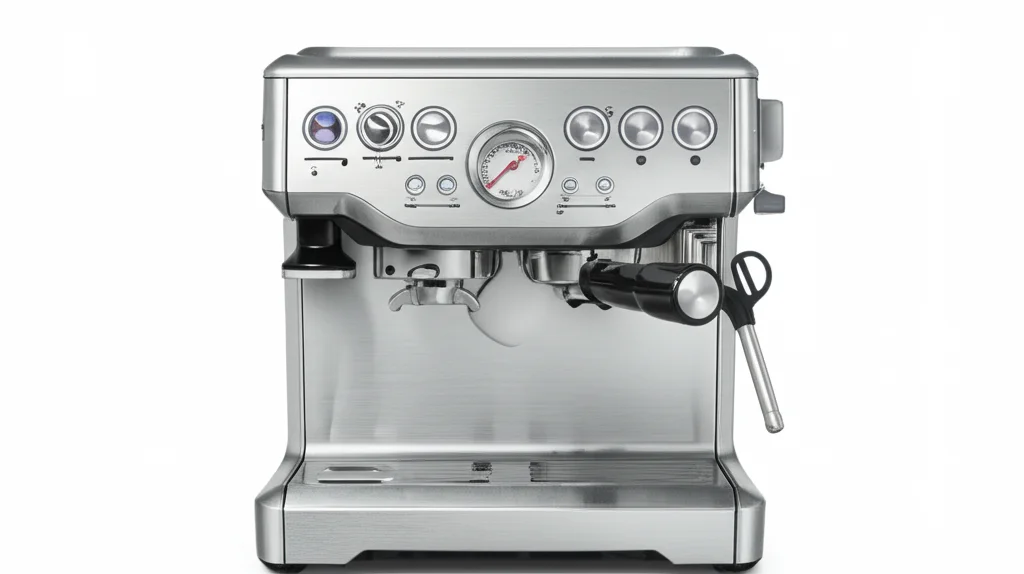· Kitchen Appliances · 6 min read
How To Clean Nespresso Vertuoline With Vinegar

Cleaning Your Nespresso Vertuoline With Vinegar: A Step-by-Step Guide
Is your Nespresso Vertuoline not brewing as quickly as it used to? Do your coffees taste a little…off? It’s likely time for a cleaning! This guide will show you how to clean a Nespresso Vertuoline with vinegar, restoring it to its peak performance. We’ll cover everything from why cleaning is important to a detailed, step-by-step process, ensuring your machine continues to deliver delicious coffee for years to come. Let’s get started and bring back that fresh, flavorful brew you love.
Takeaway:
- Regular cleaning prevents mineral buildup.
- Vinegar is a safe and effective descaling agent.
- Following the correct process ensures optimal performance.
- Rinsing thoroughly removes any vinegar taste.
Can you use vinegar to clean a Nespresso Vertuoline?
Yes, you can! Vinegar is a natural and effective descaling agent that helps remove mineral buildup inside your Nespresso Vertuoline. Using a vinegar solution regularly will keep your machine functioning properly and ensure your coffee tastes its best. It’s a simple, affordable way to maintain your coffee maker.
Why Cleaning Your Nespresso Vertuoline Is Crucial
Your Nespresso Vertuoline, like any coffee machine, is susceptible to mineral buildup. This buildup comes from the water you use, and over time, it can significantly impact your machine’s performance. Ignoring this buildup isn’t just about weaker coffee; it can actually damage your machine. Here’s a closer look at why regular cleaning is so important.
- Improved Coffee Quality: Mineral deposits can affect the water temperature and pressure, leading to a less flavorful and aromatic cup of coffee.
- Extended Machine Lifespan: Buildup can strain the internal components of your Vertuoline, potentially causing them to wear out prematurely.
- Optimal Brewing Performance: A clean machine brews faster and more efficiently, ensuring you get the perfect crema every time.
- Prevents Blockages: Mineral deposits can clog the brewing needles and other small parts, leading to brewing issues.
Gathering Your Supplies for Nespresso Cleaning
Before you begin, it’s important to have everything you need readily available. This will make the cleaning process smoother and more efficient. You don’t need a lot of specialized equipment, which is one of the benefits of using vinegar!
- White Vinegar: Distilled white vinegar is the best choice for descaling. Avoid using other types of vinegar, as they may contain additives that could damage your machine.
- Water: Filtered water is recommended to avoid introducing new minerals into the system.
- Empty Mug or Container: You’ll need something to collect the water during the cleaning cycles.
- Nespresso Descaling Solution (Optional): While vinegar works well, you can also use a commercially available Nespresso descaling solution if you prefer.
- Soft Cloth: For wiping down the exterior of the machine.
Step-by-Step: Descaling Your Nespresso Vertuoline with Vinegar
Now, let’s get to the cleaning process! This is a straightforward procedure, but it’s important to follow the steps carefully for the best results. Remember to read your Nespresso Vertuoline’s manual for any specific instructions or warnings.
- Prepare the Vinegar Solution: Mix equal parts white vinegar and water. For a standard Vertuoline, start with approximately 500ml (about 2 cups) of each.
- Fill the Water Tank: Pour the vinegar solution into the water tank of your Nespresso Vertuoline.
- Start the Descaling Cycle: Turn on your machine and initiate the descaling mode. This is usually done by pressing and holding the brew button for a specific amount of time (refer to your machine’s manual).
- Run the Cycle: The machine will automatically run the vinegar solution through the system. This process may take several minutes. Place an empty mug or container under the coffee outlet to collect the liquid.
- Empty and Refill: Once the first cycle is complete, empty the used vinegar solution from the container and refill the water tank with fresh, clean water.
- Rinse with Water: Run several cycles with just water to thoroughly rinse the system and remove any remaining vinegar residue. This is crucial to avoid a vinegary taste in your coffee. Run at least 3-5 cycles.
- Wipe Down the Exterior: While the machine is cooling down, wipe down the exterior with a soft, damp cloth.
Understanding the Importance of Thorough Rinsing
Rinsing is arguably the most important step in the cleaning process. Vinegar, while effective at descaling, can leave behind a lingering taste if not completely removed. A thorough rinse ensures your next cup of coffee is as delicious as it should be.
- Multiple Cycles: Don’t skimp on the rinsing cycles. Running 3-5 cycles with fresh water is recommended.
- Taste Test: After rinsing, brew a small cup of water (without a capsule) and taste it. If you detect any vinegar flavor, run another rinsing cycle.
- Fresh Water Only: Use only fresh, clean water for rinsing. Avoid adding any other solutions or cleaning agents.
How Often Should You Clean Your Nespresso Vertuoline?
The frequency of cleaning depends on how often you use your Nespresso Vertuoline and the hardness of your water. However, a general guideline is to descale your machine every 3-6 months. If you use your machine daily or have hard water, you may need to clean it more frequently.
- Daily Use: Descale every 3 months.
- Moderate Use (a few times a week): Descale every 6 months.
- Hard Water: Descale every 2-3 months.
- Signs It’s Time to Clean: Reduced brewing speed, weaker coffee, or unusual noises from the machine.
Troubleshooting Common Nespresso Cleaning Issues
Sometimes, even with careful cleaning, you might encounter a few issues. Here are some common problems and how to address them.
- Machine Won’t Enter Descaling Mode: Double-check your machine’s manual for the correct procedure. Ensure the power is on and the water tank is full.
- Vinegar Smell Persists: Run additional rinsing cycles with fresh water. You can also try brewing a few capsules of coffee to help eliminate the smell.
- Machine Still Brewing Slowly: There may be a stubborn blockage. Repeat the descaling process, ensuring the vinegar solution has enough time to circulate. If the problem persists, contact Nespresso customer support.
- Water Leaking: Ensure the water tank is properly seated and that there are no cracks or damage to the tank or machine.
FAQ: Your Nespresso Cleaning Questions Answered
Q: Can I use lemon juice instead of vinegar?
A: While lemon juice contains citric acid, which can help with descaling, vinegar is generally more effective and less likely to leave a residue. It’s best to stick with white vinegar for optimal results.
Q: Will vinegar damage my Nespresso Vertuoline?
A: When used correctly (diluted with water and followed by thorough rinsing), vinegar is safe for your Nespresso Vertuoline. Avoid using undiluted vinegar, as it could potentially damage the internal components.
Q: How long does the descaling process take?
A: The entire process, including descaling and rinsing, typically takes about 30-60 minutes, depending on the number of rinsing cycles you perform.
Q: Can I use a Nespresso descaling solution instead of vinegar?
A: Yes, you can! Nespresso descaling solutions are specifically formulated for their machines and can be a convenient alternative to vinegar.
Conclusion: Enjoying Fresh Coffee with a Clean Machine
Cleaning your Nespresso Vertuoline with vinegar is a simple yet effective way to maintain its performance and ensure you continue to enjoy delicious coffee. By following these steps and establishing a regular cleaning routine, you can extend the lifespan of your machine and savor the perfect cup every time. Don’t let mineral buildup ruin your coffee experience – take a few minutes to clean your Nespresso Vertuoline with vinegar today! Now, go ahead and brew yourself a well-deserved cup of coffee – you’ve earned it!




